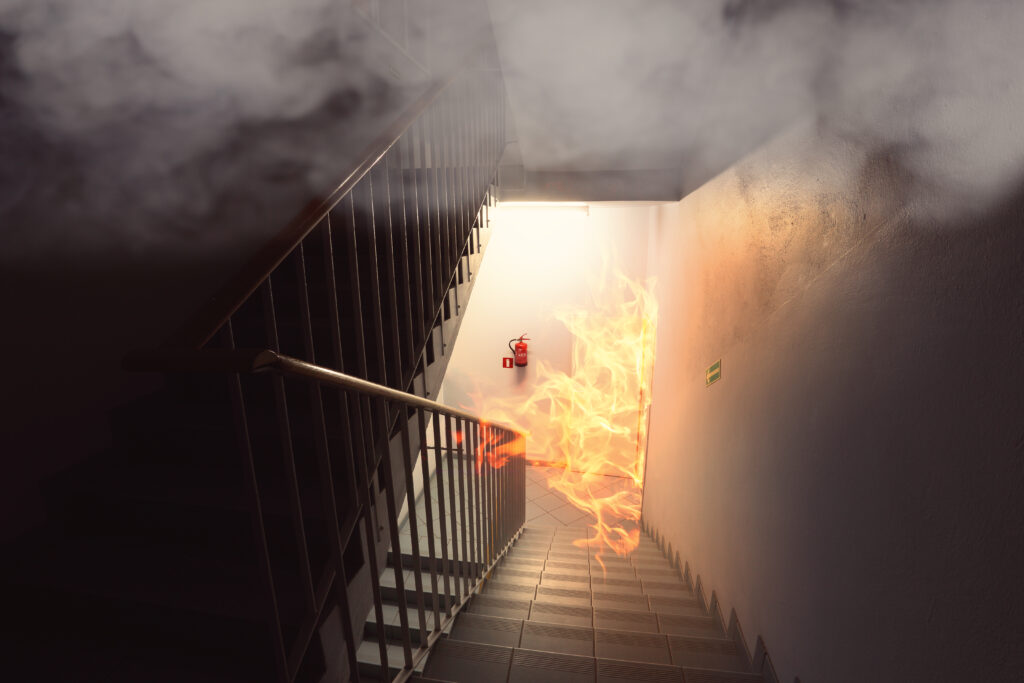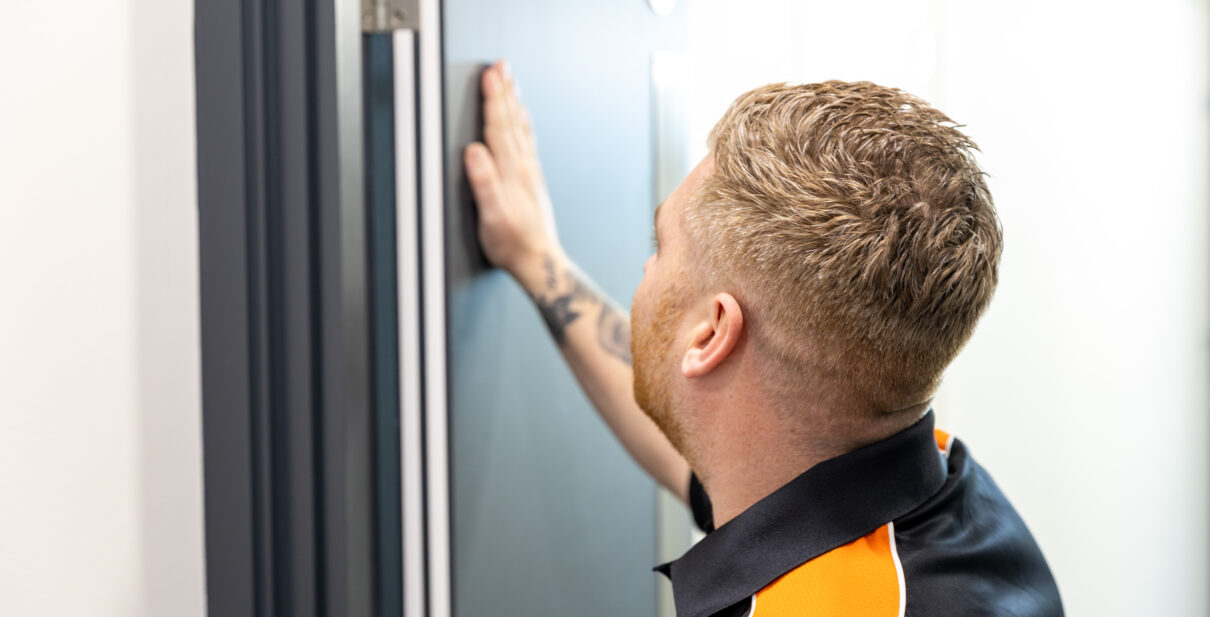A professional fire door survey is a crucial component of any building’s fire safety strategy. Fire doors are a first line of defence in slowing the spread of fire and smoke, giving occupants time to evacuate safely and emergency services time to respond. Ensuring their integrity and compliance is not just best practice — it’s a legal requirement. Conducted by accredited inspectors, fire door surveys assess the compliance, condition, and performance of fire doors in line with UK regulations, including the Fire Safety (England) Regulations 2022.
These regulations place specific responsibilities on building owners and facilities managers, particularly in buildings over 11 metres in height, where regular inspections of communal fire doors and annual checks of flat entrance doors are mandatory. If you’ve ever wondered what actually happens during a fire door survey, here’s a breakdown of the steps we take…
Key Steps in a Fire Door Inspection
Visual Inspection:
Inspectors begin by visually assessing each door for signs of wear and tear, such as cracks, delamination, or warping. Any visible damage could compromise the door’s ability to perform during a fire.
Hardware Checks:
The condition and functionality of essential components—hinges, door closers, latches, intumescent and smoke seals, and appropriate signage—are evaluated. Missing or non-compliant hardware can render the door ineffective.
Gap Measurements:

A common compliance issue is incorrect gaps between the door leaf and frame. Inspectors check that perimeter gaps are within 2–4 mm and that threshold clearance isn’t excessive.
Even small deviations can impact a fire door’s ability to block fire and smoke, compromising escape routes and reducing evacuation time. Oversized gaps can also weaken intumescent seal performance. Precise gap sizing is essential for proper door function.
Certification Verification:
Each door is checked for a valid certification label or plug, usually located on the top or edge. This confirms the door’s fire rating and verifies it has been tested to the appropriate British Standards (BS 476 or BS EN 1634).
Reporting:
After the survey, a comprehensive report is produced. This includes photographic documentation, a compliance checklist, and clear recommendations for remedial works where needed. Reports often categorise doors as compliant, partially compliant, or non-compliant.
Remedial Works:
Now comes the most important part – fixing any issues found on your doors. We carry out all remedial works, including replacements, to keep your buildings and the people within them safe. Already had your inspection? Simply book a consultation with us here and we’d be happy to quote for your remedial works.
Why it Matters...

Fire door surveys are not just about ticking boxes—they can be the difference between life and death in the event of a fire. Regular inspections ensure that any issues are identified and addressed promptly. They also protect building owners from legal liability and help maintain insurance validity.
By engaging in proactive fire door surveying, building owners and FM teams demonstrate a clear commitment to occupant safety and compliance with national fire safety legislation.
Get in touch with Global Facilities to book in your inspection with our fire safety specialists, and any remedial works needed to get your building safe, secure and protected from the risk of fire.




